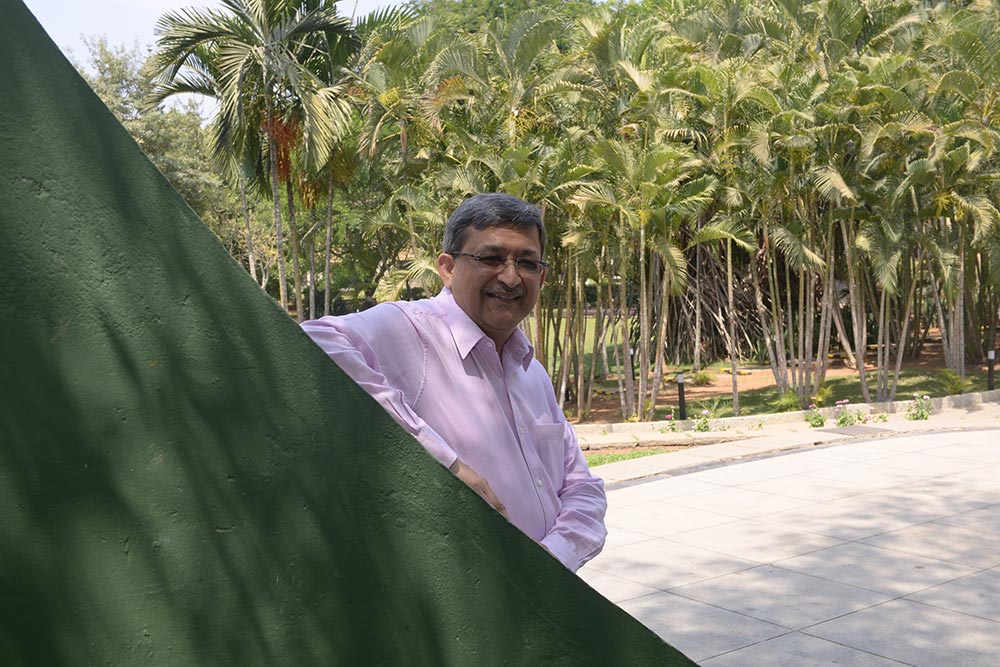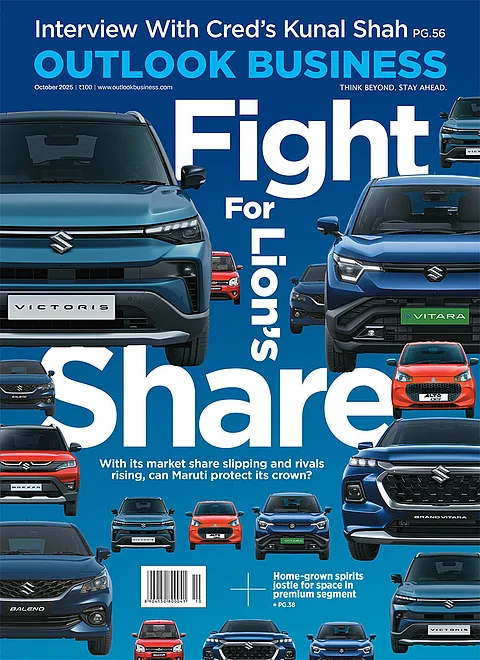In a commercial, actor Saif Ali Khan is surprised when he finds out the stunning woman he presumed was the new model is actually the photographer. While he is still wide-eyed during the shoot, a little girl comes running to her ‘Mummy’, who is, no surprise — the photographer. The scene cuts to the photographer using Santoor soap — the secret to her youthful-looking skin. Today, one cannot think of Santoor without going ‘haldi aur chandan ke gunn…’.
In a country obsessed with the two ingredients that make your skin fair and radiant, Santoor’s two-decade old marketing strategy is one that is taught in every business school. Why? Because that simple narrative changed the fate of a struggling brand and made it the second-highest selling soap in terms of value in the country. In June 2019, it edged past the celebrity-powered and HUL-owned Lux, to end the fiscal at Rs.20.65 billion (See: Favoured down South), translating to a market share of over 9%. Santoor only lags behind Lifebuoy, which is worth Rs.25 billion.
Birth of an icon
Vineet Agrawal, who has been with Wipro Consumer & Lighting since 1985, and is now the CEO of the company, recalls how after test marketing Santoor in Bengaluru, they launched it across the southern region besides Madhya Pradesh and Karnataka in mid-1986. Within a few months, by December, it was launched in Delhi, possibly the worst time to launch, says Agrawal, since usage drops during winter. The most preferred time to launch a bathing soap is summer since its freshness can easily be positioned against dirt and sweat.

Even after three years, it was selling a modest 3,000 tonne annually, in a market that sold 240,000 tonne. Most of its revenue came from the South, and Agrawal remembers the lack of growth as being “extremely frustrating”. In mid-1989, the top brass at Wipro’s consumer business was at a crossroad. Santoor was present in a market overwhelmingly dominated by the likes of Lifebuoy, Hamam, Cinthol, Lux and Rexona. It had already been four years but volume growth had stagnated, despite the soap offering a mix of quality and traditional ingredients. The team had to devise a turnaround plan, fast. Since the soap wasn’t selling on its merit alone, the management had to bite the bullet and start spending on advertising.
They could have gone with the ‘star’ factor and made the Qayamat Se Qayamat Tak actor, Aamir Khan, the face of the brand. That’s what most brands were doing, but Santoor wanted to stand out. They looked up consumer research and settled on the proposition of selling ‘younger looking skin’ to Indian women. That’s how ‘Mummy’ was born. Since then she has played different roles — from that of a woman at a wedding or a bookstore or at a PTA meeting to that of a photographer, a dancer or a pilot; each role representing a changing era. Over the past three decades, the theme has remained unchanged. So much was their conviction in the narrative that even when they roped in celebrities such as Saif Ali Khan, Mahesh Babu or R Madhavan, the central star of the ad was ‘Mummy’. Ramanuj Majumdar, marketing professor at IIM Calcutta, gives Santoor a lot of credit for changing with the times. “They transitioned and gave the brand ambassador a contemporary touch. She was not traditional anymore, and new users were also able to connect with her,” he explains.
By Agrawal’s own admission, the very first ad was not great but the strategy was “bang on” with its sandalwood and turmeric message. While some brands were focusing just on beauty, others were selling their ingredients. Santoor was the first one to sell both in one package. A former HUL executive agrees. “Successful soap brands get it right on either health or beauty. Santoor offers its consumers both, thus making it extremely formidable,” he explains. Drawing a parallel to the toothpaste market, the executive adds that Colgate has managed to position itself as a brand offering long-lasting teeth and a great smile. “If your brand is offering two key benefits, why will the consumer look elsewhere,” he asks.
Santoor’s communication cut through the noise. By 1993, its sales grew 3x. It was strange that, despite its strong positioning in soaps, HUL allowed Wipro Consumer Care’s product to grow and eat into its market share. Agrawal maintains that the brand was not taken seriously since “brands just come and go.” The former HUL executive agrees that Santoor was clearly underestimated. “We tried to take it on with sandalwood versions of Lux and Breeze. But, both were no different from Santoor and without a clear proposition, they made no impact,” he says. By the time they launched sandalwood soaps in the market, Santoor already had a loyal following. Meanwhile, he points out that Lux should have stuck to being the ‘pedestal brand’ with leading female celebrities endorsing it. “Having Shahrukh Khan as the brand ambassador or selling the soap with ingredients took the sheen away from Lux. That only opened up the market further for a brand like Santoor,” he says.
Professor Majumdar says that Santoor quickly grabbed the chance when HUL’s focus shifted. “By doing things such as changing the packaging, the brand gained a modern appeal. This was at a time when HUL shifted attention to its personal care business for higher profit,” he says.
The right call
Santoor’s concentrated effort was not limited to its messaging; it applied the same focus on particular geographies. For instance, in 1994, the soap was far from popular in North India. Instead of throwing more money there, the team decided to skew the marketing budget towards states such as Andhra Pradesh, Karnataka, Kerala, Maharashtra and Odisha. For one, Wipro had a strong distribution network in the region, with its Sunflower Vanaspati brand sold in large quantities in the South and the West, since its factories were located here. For another, the soap appealed to sensibilities of the South, where consumers believe in the natural ingredients story.
Ambi Parameswaran, who was then the CEO of FCB Ulka (and is now an independent brand strategist), the agency Wipro had recruited, says that markets in North India are value driven. “That meant Lifebuoy, Breeze and Nirma worked well. Down South, benefit-driven soaps work well,” he says. The North Indian consumer tends to go for value-for-money brands such as Godrej No 1, Lifebuoy, Breeze or Nirma. “This could be related to the low literacy rate in women and the income profile of households,” adds Parameswaran.
Meanwhile, in the South, another soap that offers the ingredient story is Mysore Sandalwood, but thankfully for Santoor, it is a premium product and largely restricted to one state. Moreover, HUL would go on to adopt a power brand strategy in 2001 and focus on just 30 brands from its vast portfolio of over 100. Ignoring its sole sandalwood soap Moti eventually gave Santoor a free run. Abhijeet Kundu, analyst, Antique Stock Broking, says that even if a loyal consumer upgrades, he or she will still pick Santoor. He reasons, “If an FMCG brand gets it right on product efficacy, it can easily charge a premium.”
Kundu adds that by limiting a brand’s geographic focus, advertising and promotion costs are contained. While advertising on Hindi satellite channels has always been expensive, Kundu says that being the top player in any region helps a company get better media rates. He adds, “A predictable cost structure can easily give it Ebitda margins of 15-16%.” When it decided to focus on the South, Santoor was spending Rs.40 million — half of what HUL’s brands were spending on media.
Within three months of this regional targeting, sales boomed in the South by almost 25%, according to Agrawal. That was in line with expectation. But this surprised the team more: despite ad money being taken off the northern market, sales in that region did not fall. In the South, the real surge came from Andhra, where HUL’s Rexona had a share of 25-28%. Santoor had decided to headbutt the market leader. “Rexona started experimenting with the brand by getting into areas such as deodorants and that helped us push Santoor,” says Agrawal. Today, Santoor has a market share of more than 35% in Andhra and Telangana whereas the rest is split between Rexona, Hamam and other brands. The South and West account for almost 70% of Santoor’s volume, with the rest split between the North and East. Parameswaran says Andhra’s affordable cost of media as opposed to Tamil Nadu’s helped a great deal. “It was the early phase of satellite television, and the brand was promoted a lot on the medium,” he adds.
Trial and error
Even though Santoor has become a formidable brand, its other forays haven’t seen much success. From launching talcum powder in 1990, the brand also introduced products such as facewash, handwash and deodorants. But handwash segment is dominated by Lifebuoy and Dettol, and the deodorant space is hardly welcoming of a sandalwood fragrance.
While they may not have been as successful as the soap, Agrawal maintains that it is important for consumers to stick to Santoor in some form. “That’s why we launched soap variants such as gold and glycerine,” he adds. Parameswaran, too, believes extensions, within limit, help the soap, “It sends out a message that the brand is doing a lot”. The company is now planning to venture into the bodywash category, since it is the closest to soap.
The orange Santoor still brings in over 90% of the brand’s revenue. Out of the 480,000 tonne soap sold in the country, Santoor sells 120,000 tonne. That’s not a number to be scoffed at. But, can the brand stay relevant for the next generation? The Rs.20-billion brand may need more than a glowing supermom for that.












 Just one email a week
Just one email a week